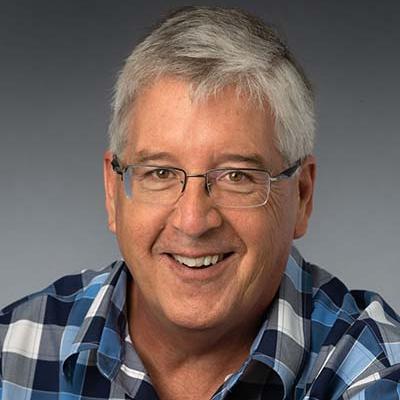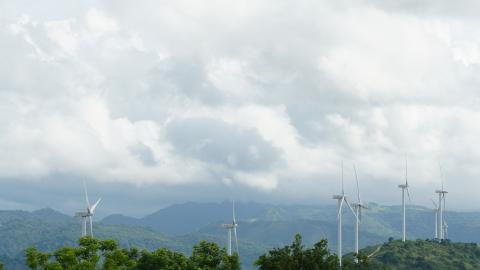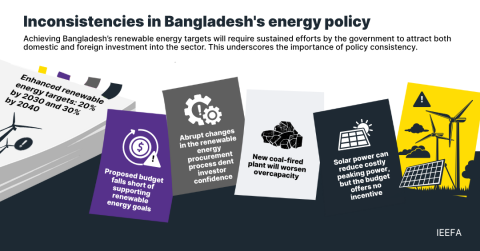IEEFA U.S.: Wyoming legislative push for carbon-capture subsidy would cost state ratepayers for years to come
In making a pitch for a multi-billion-dollar ratepayer-funded bailout of the state’s coal industry, Wyoming legislators are avoiding the hard truth of market realities all around them and asking rank-and-file electric customers to foot the bill.
Legislation now being considered by the Wyoming legislature (House Bill No. HBO200) would direct the state’s utility commission to establish a “low-carbon energy standard” that, by definition, could only be met by retrofitting existing coal-fired plants with carbon capture equipment; carbon free wind and solar generation would not be eligible.To entice compliance, the legislation would allow each affected utility to recover up to $1 billion from ratepayers to cover the cost of any new carbon capture and storage equipment.
The Wyoming Public Service Commission regulates three publicly owned utilities doing business in the state—PacifiCorp’s Rocky Mountain Power unit, Black Hills Corp., and Montana-Dakota Utilities. But the legislation is aimed mainly at PacifiCorp, which announced plans last fall to close four coal-fired units in the state (Jim Bridger Units 1 and 2 and Naughton Units 1 and 2) by 2028. That announcement, coupled with plans by the company to close five other units (Naughton 3 and the four unit Dave Johnston plant) by 2027, shocked state and local politicians—particularly since the utility made clear it planned to replace the coal capacity largely with cheaper, cleaner renewable energy.
Rep. Dan Zwonitzer, R-Cheyenne, the bill’s sponsor and chairman of the House Revenue Committee , said the legislation would enable the state to keep its coal plants operating and boost revenue at both the local and state level, while at the same time shifting most of the cost of the bailout elsewhere. “If this bill were to pass … we can export that tax burden to people in other states.”
The problem with Zwonitzer’s assumption is that it flies in the face of utility ratemaking practices. PacifiCorp, the parent company of Rocky Mountain Power, serves some 1.9 electric customers across six states in the Western U.S. Three of those six—Washington, Oregon and California—have solid commitments to move toward carbon free electricity, beginning with Washington’s 2025 coal-fired power phaseout deadline. Were PacifiCorp to approach regulators in any of those three states asking for the authority to pass along a share of Wyoming carbon capture retrofit costs, the answer would almost certainly be a resounding no. “Your Wyoming ratepayers should pay for that,” would be the reply.
A proposal to take a dead-end racket and turn it into a bigger racket.
That risk, that none of the other five states would chip in for the retrofit costs, is real. Should the legislature move forward, the $1 billion in preapproved costs could end up being split among the roughly 140,000 PacifiCorp customers in Wyoming—essentially imposing a tax of more than $7,000 per customer. In a state that doesn’t even have an income tax, we believe the proposal would generate massive public opposition.
The bill’s sponsors also claim that the proposal would enable Wyoming’s coal-fired generators to continue selling electricity into the Western markets that are going emissions free. “While other states’ ratepayers may not like it,” Zwonitzer told WyoFile, “it certainly helps meet the demand for cleaner energy. We’re just doing it another way.”
The standards in the bill may qualify as clean for Zwonitzer and others, but they are anything but. The “low-carbon standard” in the bill would direct generators to meet a limit of 650 pounds of carbon dioxide for every megawatt-hour of electricity produced. That would amount to a reduction of about 70% from uncontrolled coal emissions and bring the retrofitted plants’ emissions down to the level of combined cycle gas plant. But clearly nowhere close to the zero carbon standard mandated in PacifiCorp’s coastal service territory.
As if this weren’t bad enough, the proposal also would allow for complying utilities to ask the commission to approve a higher return on equity for their investment. That is, the proposal would make ratepayers pay for everything to start with, and then give the utility(ies) a bonus from ratepayers once the plant is up and running. This amounts to another tax, if a bit harder to quantify.
Finally, the proposal would allow utilities to sell their captured carbon—existing federal tax credits offer $35 per ton for CO2 captured and used in enhanced oil recovery activities or $50 per ton for CO2 that is captured and permanently sequestered—and ask the commission to “allow a portion” of any resulting revenues “to be returned to the shareholders of the public utility.” Another great trade: all the investment risk is placed on the ratepayers while the benefits, if any, would accrue to shareholders.
All of this is being proposed in the name of trying to extend the life of Wyoming’s rapidly declining coal industry, which grows smaller by the day as cheaper forms of power generation—gas, wind and solar—spell the end of coal-fired electricity as Americans have come to know it.
Coal-fired power generation isn’t economically competitive anymore, a circumstance that is being felt hard across coalfield communities nationally and that is bringing carbon-capture salesmen out of the woodwork. Their promise is that coal-fired power can be reinvented in a way that makes it competitive and clean.
IEEFA OVER THE PAST SEVERAL MONTHS HAS BEEN RESEARCHING ONE SUCH PITCH IN NEW MEXICO, where a novice, undercapitalized company last year won a $2.6 million taxpayer-funded grant to study the feasibility of a carbon-capture retrofit of the San Juan Generating Station.
The San Juan proposal has a strong carpet-bagger whiff about it, and IEEFA has concluded that the business case for it is nonexistent and that the only players likely to benefit from it are the individuals who got the grant (see IEEFA’s latest report on the topic, “Enchant’s Proposed CCS Project at the San Juan Generating Station: False Promises and Major Risks”). Support for the proposal in the local community is substantial, however, if only because it creates the illusion that coal-fired power is sustainable.
What’s materializing in Wyoming in the guise of HB0200 is part of a carbon-capture-experiment racket that has existed for years in that state, at taxpayer expense, but that has nothing to show for it. HB0200 would expand the racket.
It would be one thing for the coal industry to invest in such efforts, because that would signal that the industry is willing to put its money where its mouth is—that perhaps it really believes in the viability of carbon capture.
To ask ratepayers and taxpayers to fund it is something else, putting all the risk and cost onto households and businesses that deserve better from their political leaders and those that stand to benefit from those politicians’ largesse.
Related items:
IEEFA report: Proposed carbon capture retrofit of San Juan Generating Station does not add up
IEEFA op-ed: Reality of carbon capture not even close to proponents’ wishful thinking
IEEFA update: High-risk carbon capture deal not in New Mexico city’s best interest















